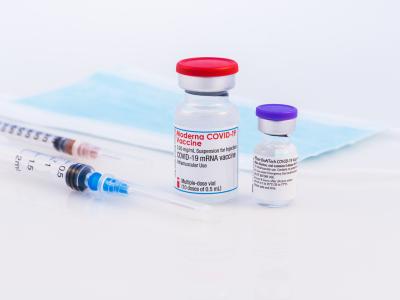ECDC recommends multipronged effort to combat MCR-1 resistance
The MCR-1 resistance gene, which has now been detected in at least 20 countries and renders bacteria resistant to the last-resort antibiotic colistin, poses a "substantial public health risk" to the European Union and must be combatted on a range of fronts, the European Centre for Disease Prevention and Control (ECDC) said today in its latest rapid risk assessment.
"This plasmid-mediated gene epidemic is of exceptional public health concern because it further limits treatment options in patients with infections caused by multidrug-resistant (MDR) gram-negative bacteria and can spread colistin resistance more easily between bacteria and humans than colistin resistance resulting from chromosomal mutation," the agency said.
"MDR gram-negative bacteria, including carbapenem-resistant Enterobacteriaceae strains that acquire the mcr-1 gene, remain susceptible to only a few antimicrobial agents, which means that infections caused by these strains are very difficult to treat and result in excess mortality. As the limited development of new antimicrobials is unlikely to provide a solution anytime soon, it is crucial to take measures to control the spread of mcr-1 and thus protect the activity of colistin."
The ECDC recommends improved lab detection, heightened surveillance, optimal clinical management, hospital infection control measures and antibiotic stewardship, a "one health" approach to containment, and a reduction of colistin use in animals.
Regarding clinical management, the ECDC says, "Colistin treatment should be accompanied by colistin susceptibility testing. Patients with infections due to colistin-resistant bacteria are likely to benefit from consultations with experts in infectious diseases or clinical microbiology, which ensures the best possible therapeutic regimen considering the limited treatment options."
And the agency described a one health approach thus: "Close cooperation between veterinary medicine and human medicine, combined with regular monitoring in domestically produced and imported foodstuffs, is needed to assess whether consumers may be exposed to mcr-1-positive gram-negative bacteria via food."
Jun 15 ECDC rapid risk assessment
China reports 3 new H7N9 cases in Hebei province
Chinese authorities have confirmed three new cases of H7N9 avian flu in Hebei province, including the first two infections in Tianjin city, according to a news release from Hong Kong's Centre for Health Protection (CHP).
One of the two patients hospitalized in Tianjin is from Langfang, which sits halfway between Tianjin and Beijing in Hebei province, and the other is from Tianjin. Both are hospitalized for severe pneumonia, local health officials said. Both had contact with poultry, but their cases are not epidemiologically linked, the CHP said. It did not list their ages or sex.
The other patient is a 68-year-old female farmer from Langfang who is hospitalized in Beijing, the city's health department reported. She is listed in critical condition and did not have poultry exposure.
The CHP also provided details on three previously reported patients: a 57-year-old male farmer in Hebei, a 45-year-old male farmer in Jiangsu province who was working in a poultry market, and a 53-year-old woman in Jiangsu who had contact with live poultry. All three are hospitalized in serious condition.
The three new H7N9 cases bring the global total to 796 cases, according to a list maintained by FluTrackers, an infectious disease news message board.
Jun 15 Hong Kong CHP news release
FluTrackers H7N9 case list
Study: Fatal Ebola associated with age, fever, and … hiccups
Among characteristics that might be predictive of death in Ebola patients are older age, presence of fever, and the occurrence of hiccups, according to a retrospective study by Chinese researchers of patients in Sierra Leone published yesterday in the American Journal of Infection Control.
The study population comprised 139 consecutive patients with laboratory-confirmed Ebola seen from Nov 15, 2014, to Jan 18, 2015, at the JUI Holding and Treatment Centre in western Sierra Leone, which was operated by a medical team from China.
The authors collected information on the epidemiologic characteristics, clinical manifestations, and clinical outcomes of the patients and looked for independent factors that were associated with fatal cases.
Median age of the patients was 29 years, 77 (55.4%) of patients were women and 62 (44.6%) men, and the disease was fatal in 76 (54.7%) of patients. The most common symptoms were fatigue (82.0%), anorexia (70.5%), abdominal pain (59.7%), diarrhea (58.3%), vomiting (56.1%), fever (55.4%), and muscle pain (54.9%). Bleeding was present in only 10.8% of the patients.
The case-fatality rate was higher among men than women (69.4% vs 42.9%). Of the 28 patients over the age of 45 years, 23 died and 5 survived, for a case-fatality rate of 82.1%, far higher than for the younger patients. The difference between patients with fever who died and those who survived was statistically significant (68.4% vs 39.7%; P = 0.001), as was the difference in those with hiccups (38.2% vs 6.3%, P < 0.001).
The authors, while saying their findings need verification by other and larger studies, say their findings help flesh out the picture of Ebola patients whose cases are more likely to be fatal.
Jun 14 Am J Infect Control abstract
DARPA aims to mitigate infectious disease by predicting contagiousness
A new program from the Defense Advanced Research Projects Agency (DARPA) aimed at early prediction of how contagious an infected person will be even before they show symptoms may result in the capability to intervene before that person begins spreading the infection to others and thus mitigate or avoid outbreaks, DARPA said in a Jun 13 announcement.
The program, called Prometheus, will attempt to discover a minimal set of biomarkers, defined by DARPA as measurable indicators of the severity or presence of some disease state "that would indicate, less than 24 hours after exposure to a pathogen, whether an individual will become contagious." Early treatment could then be initiated or steps taken, such as limiting exposure, before the infected person begins infecting others.
Prometheus will focus on acute respiratory infections. Identifying contagiousness early would be especially beneficial in well-defined communities such as on cruise ships or at military posts, notes DARPA. It would also enable researchers to build more successful models of transmission and aid in developing effective medical and public health interventions, said Matt Hepburn, program manager for Prometheus.
DARPA is sponsoring a Prometheus Proposers Day on Jun 27 in Chicago for teams of specialists in such fields as immunology, microbiology, clinical epidemiology, medical infectious diseases, computational biology, bioinformatics, and molecular biology.
Jun 13 DARPA announcement
Special notice about Proposers Day














